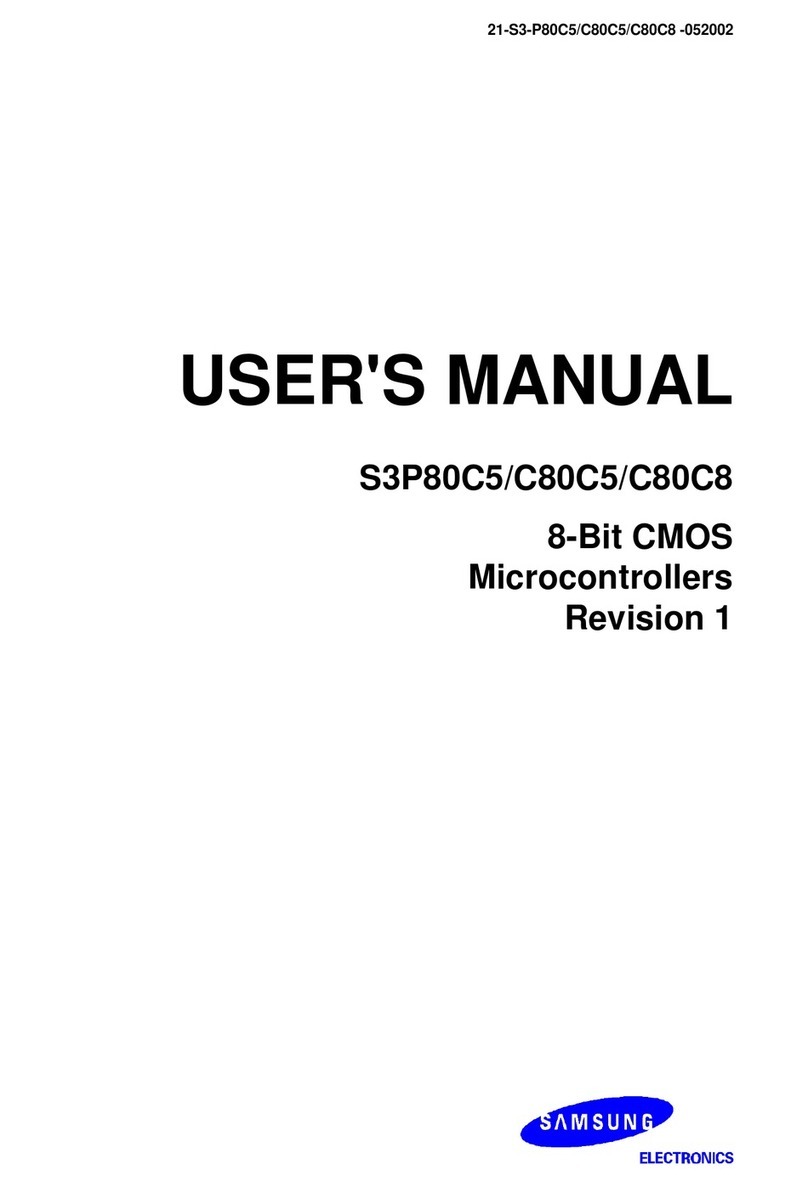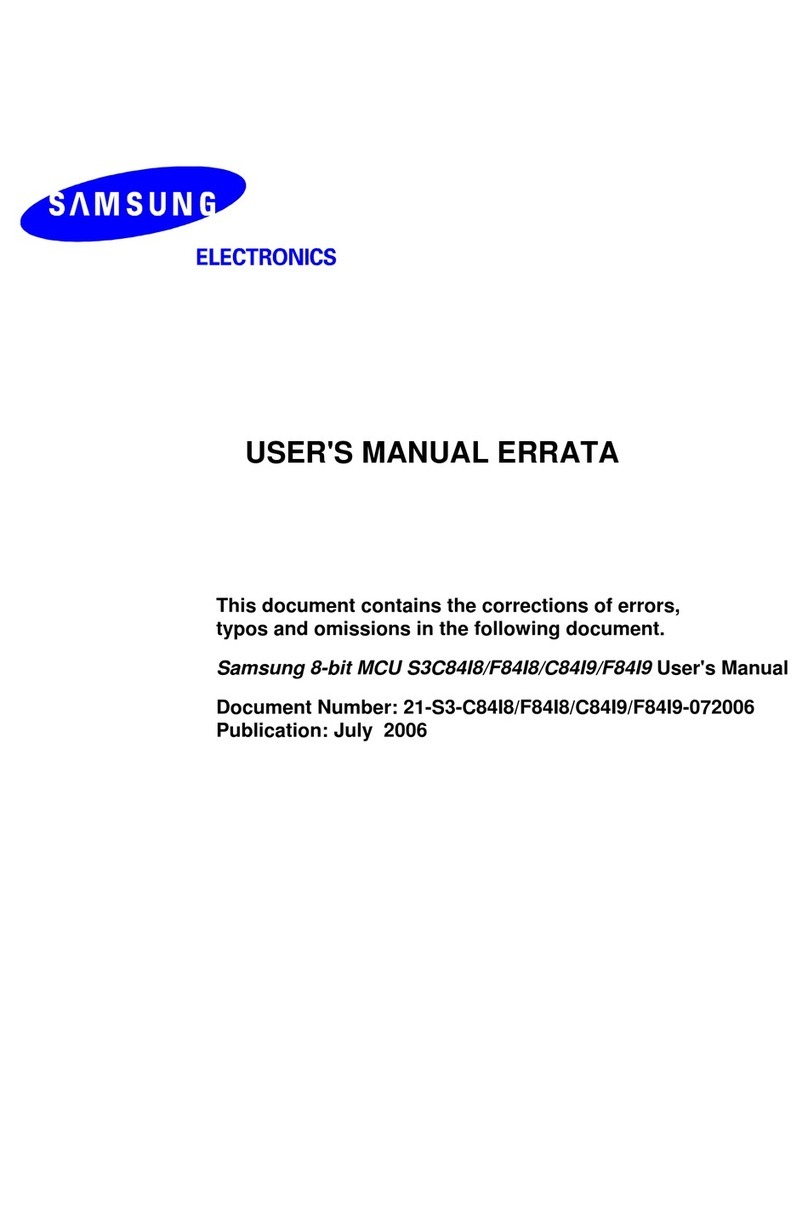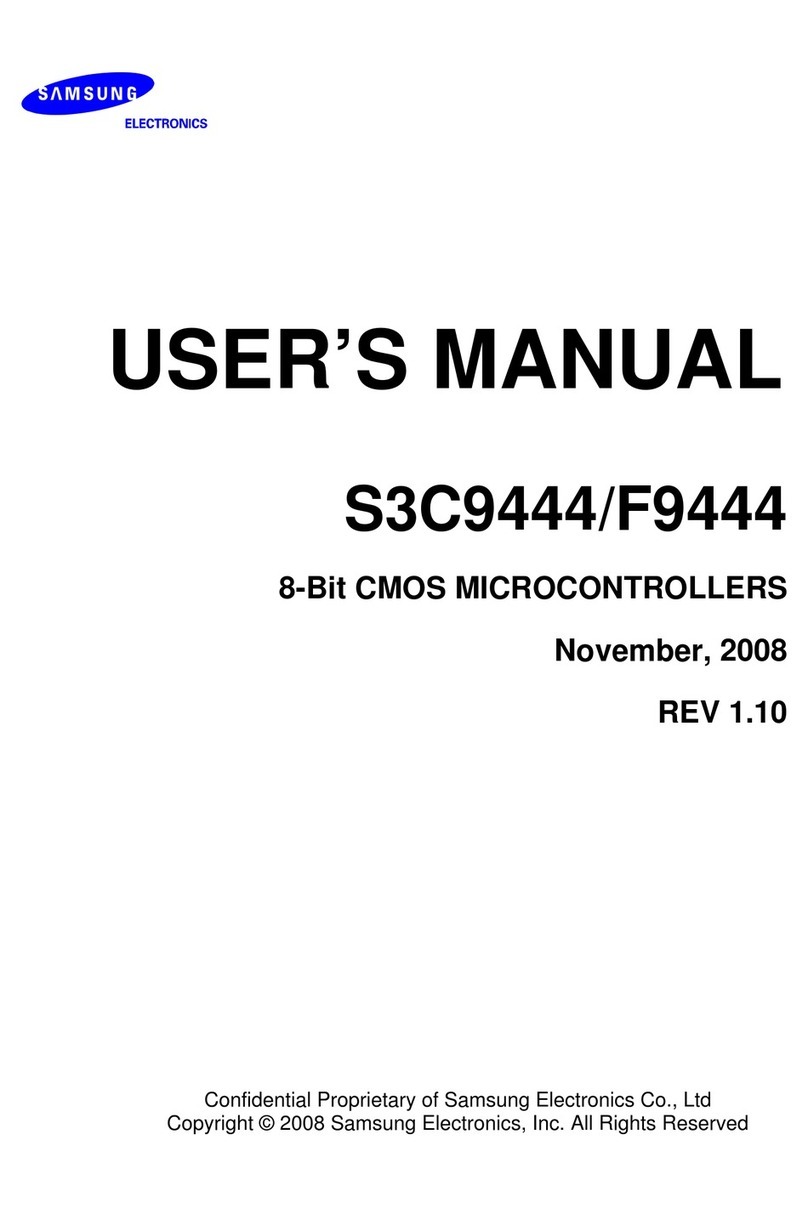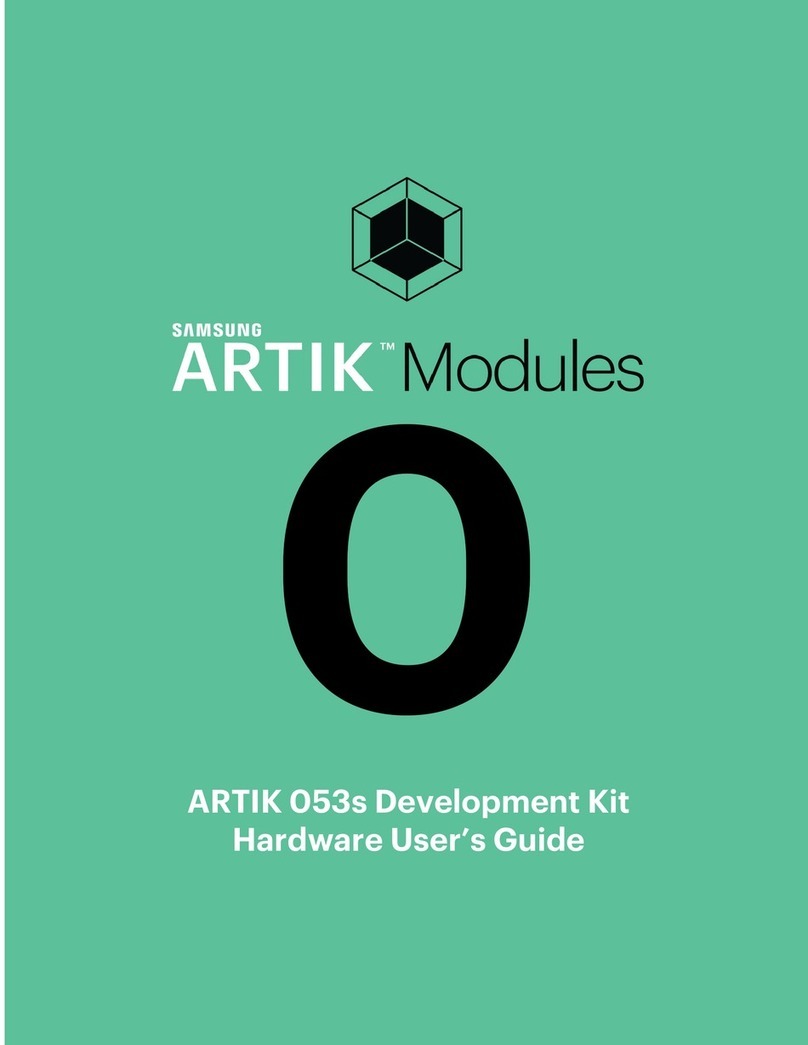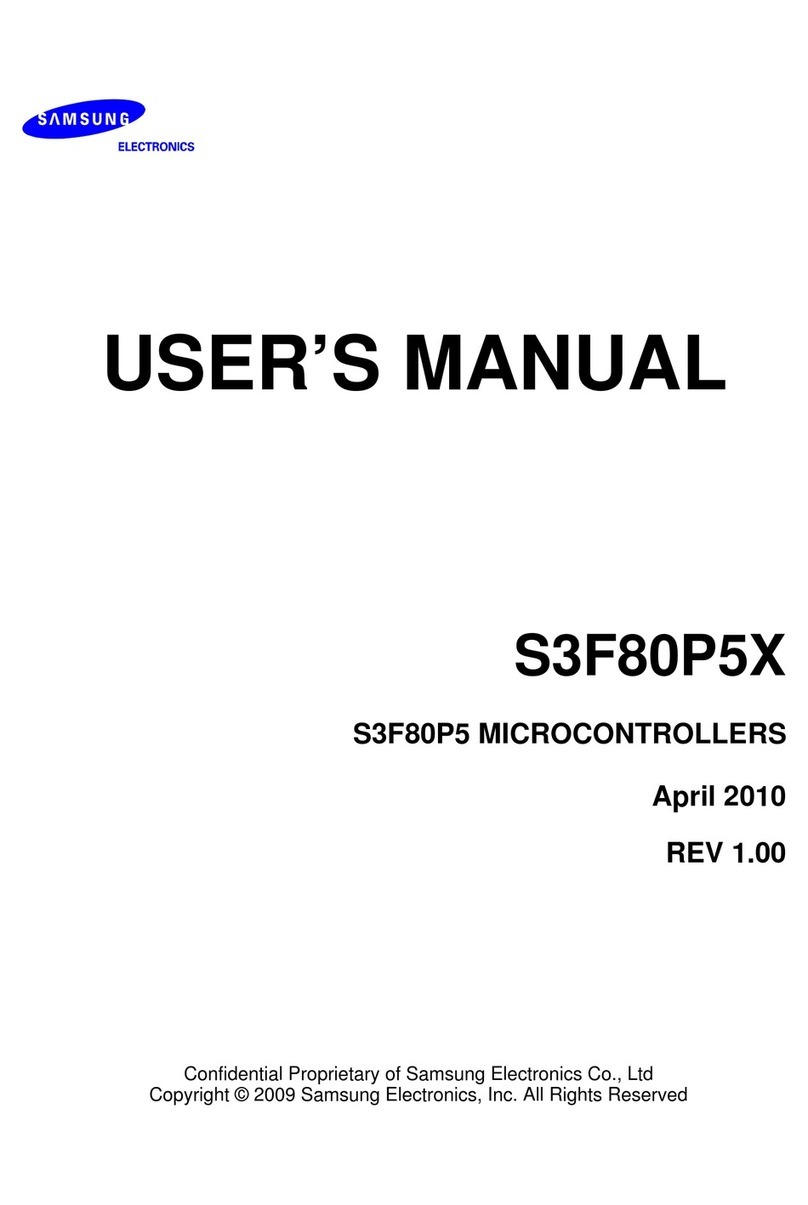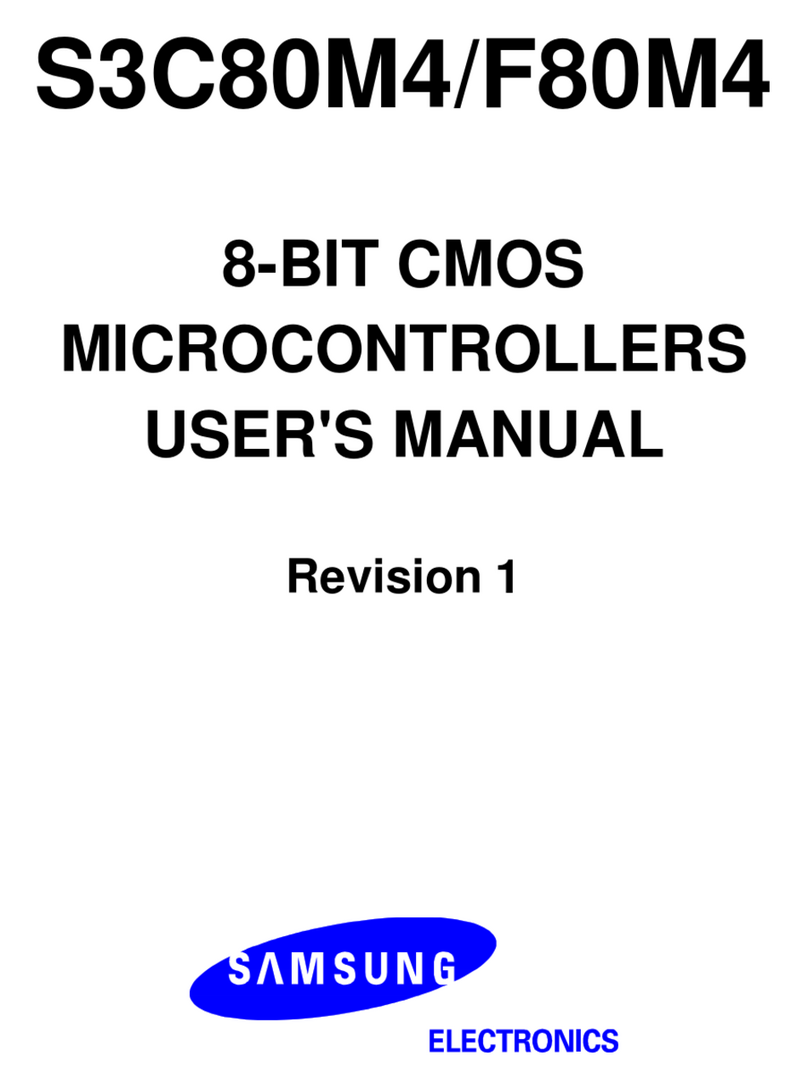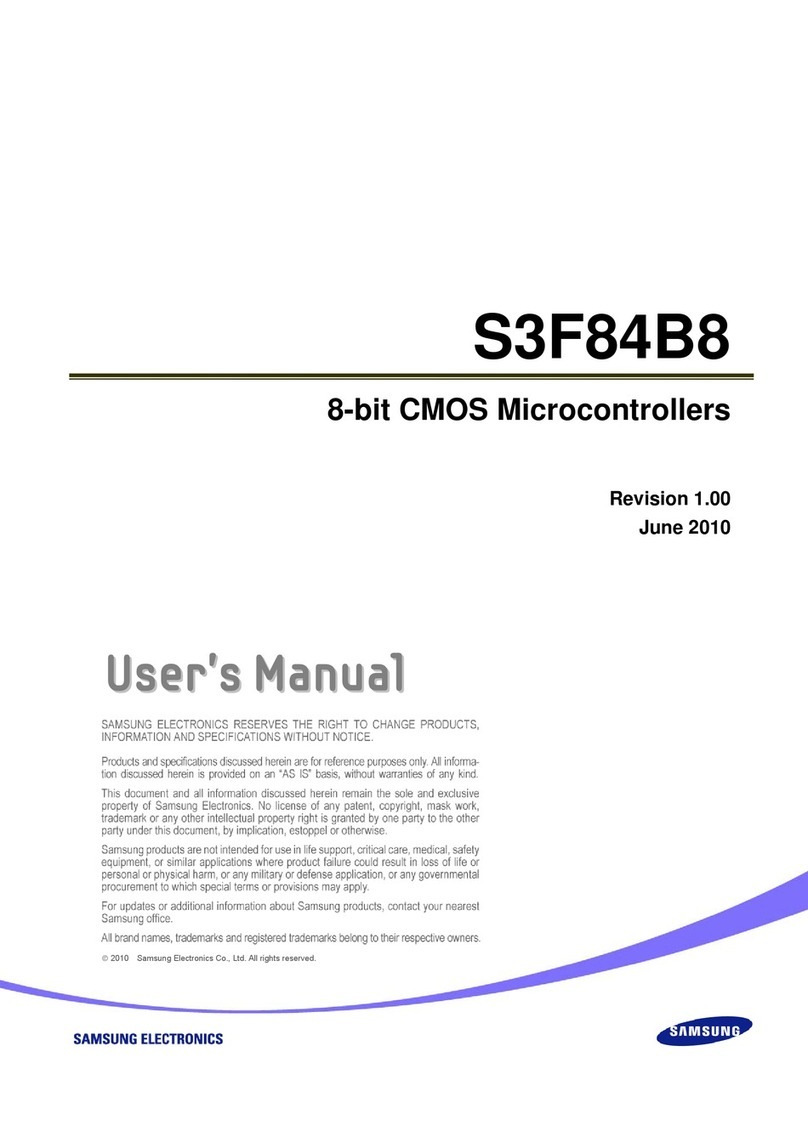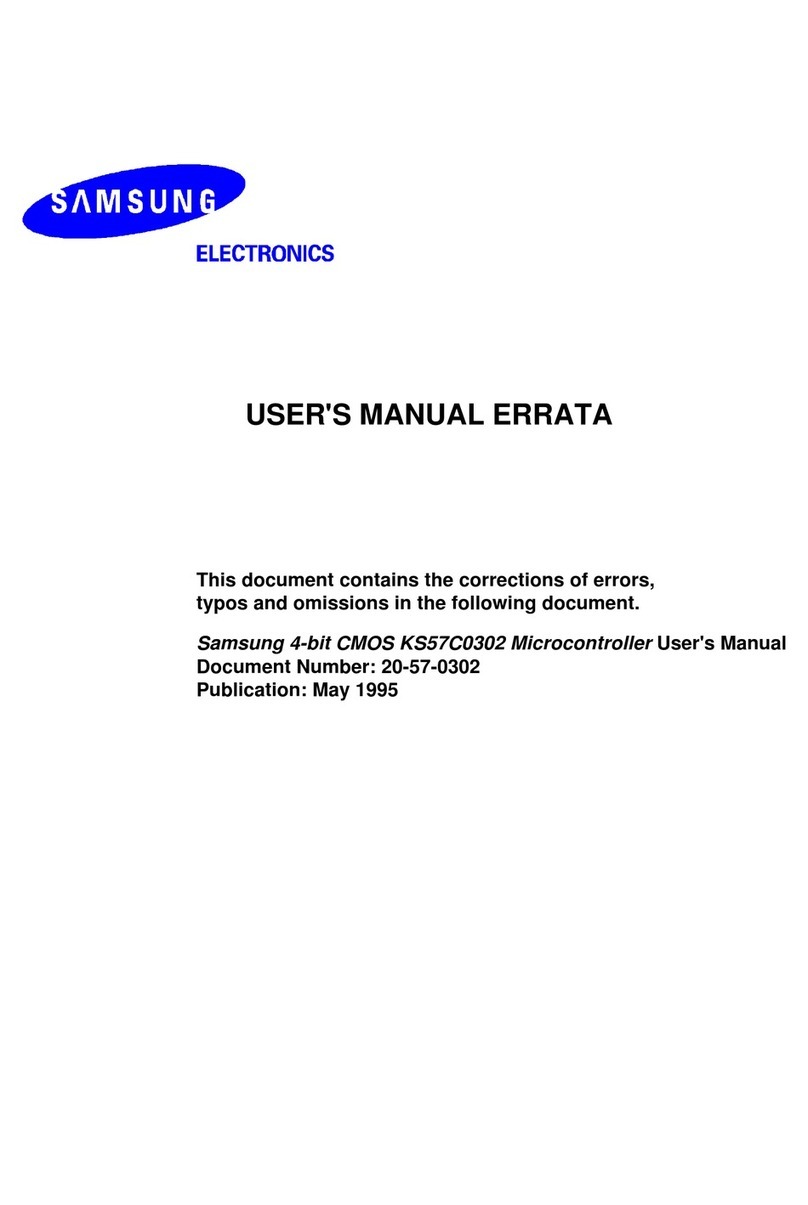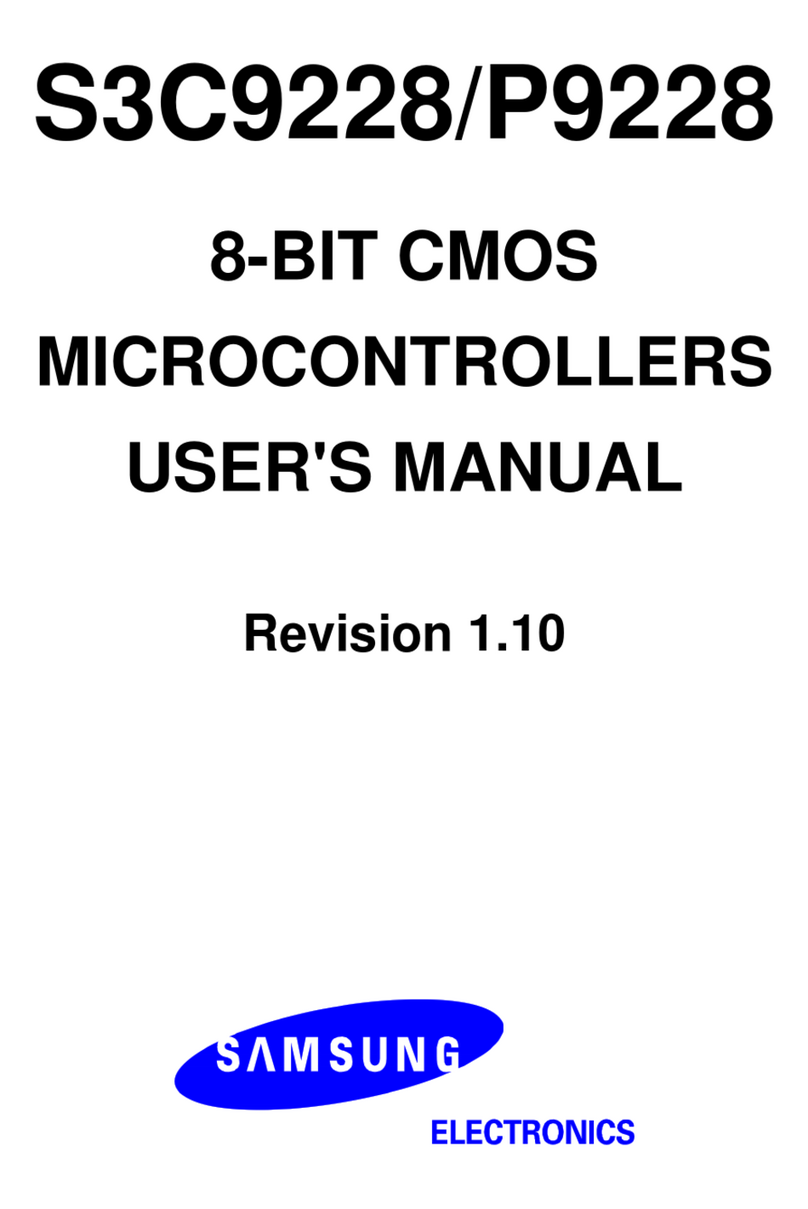
S3C9442/C9444/F9444/C9452/C9454/F9454 PRODUCT OVERVIEW
1-1
1PRODUCT OVERVIEW
SAM88RCRI PRODUCT FAMILY
Samsung's SAM88RCRI family of 8-bit single-chip CMOS microcontrollers offers a fast and efficient CPU, a wide
range of integrated peripherals, and various mask-programmable ROM sizes.
A address/data bus architecture and a large number of bit-configurable I/O ports provide a flexible programming
environment for applications with varied memory and I/O requirements. Timer/counters with selectable operating
modes are included to support real-time operations.
S3C9442/C9444/C9452/C9454 MICROCONTROLLER
The S3C9442/C9444/C9452/C9454 single-chip 8-bit microcontroller is designed for useful A/D converter , SIO
application field. The S3C9442/C9444/C9452/C9454 uses powerful SAM88RCRI CPU and
S3C9442/C9444/C9452/C9454 architecture. The internal register file is logically expanded to increase the on-
chip register space.
The S3C9442/C9444/C9452/C9454 has 2K/4K bytes of on-chip program ROM and 208 bytes of RAM. The
S3C9442/C9444/C9452/C9454 is a versatile general-purpose microcontroller that is ideal for use in a wide range
of electronics applications requiring simple timer/counter, PWM. In addition, the S3C9442/C9444/C9452/C9454’s
advanced CMOS technology provides for low power consumption and wide operating voltage range.
Using the SAM88RCRI design approach, the following peripherals were integrated with the SAM88RCRI core:
—Three configurable I/O ports (18 pins)
—Four interrupt sources with one vector and one interrupt level
—One 8-bit timer/counter with time interval mode
—Analog to digital converter with nine input channels and 10-bit resolution
—One 8-bit PWM output
The S3C9442/C9444/C9452/C9454 microcontroller is ideal for use in a wide range of electronic applications
requiring simple timer/counter, PWM, ADC. S3C9452/C9454 is available in a 20/16-pin DIP and a 20-pin SOP
package. S3C9452/C9454 is available in a 8-pin and a 8-pin SOP package.
MTP
The S3F9444/F9454 is an MTP (Multi Time Programmable) version of the S3C9442/C9444/C9452/C9454
microcontroller. The S3F9444/F9454 has on-chip 4-Kbyte multi-time programmable flash ROM instead of
masked ROM. The S3F9444/F9454 is fully compatible with the S3C9442/C9444/C9452/C9454, in function, in
D.C. electrical characteristics and in pin configuration.
